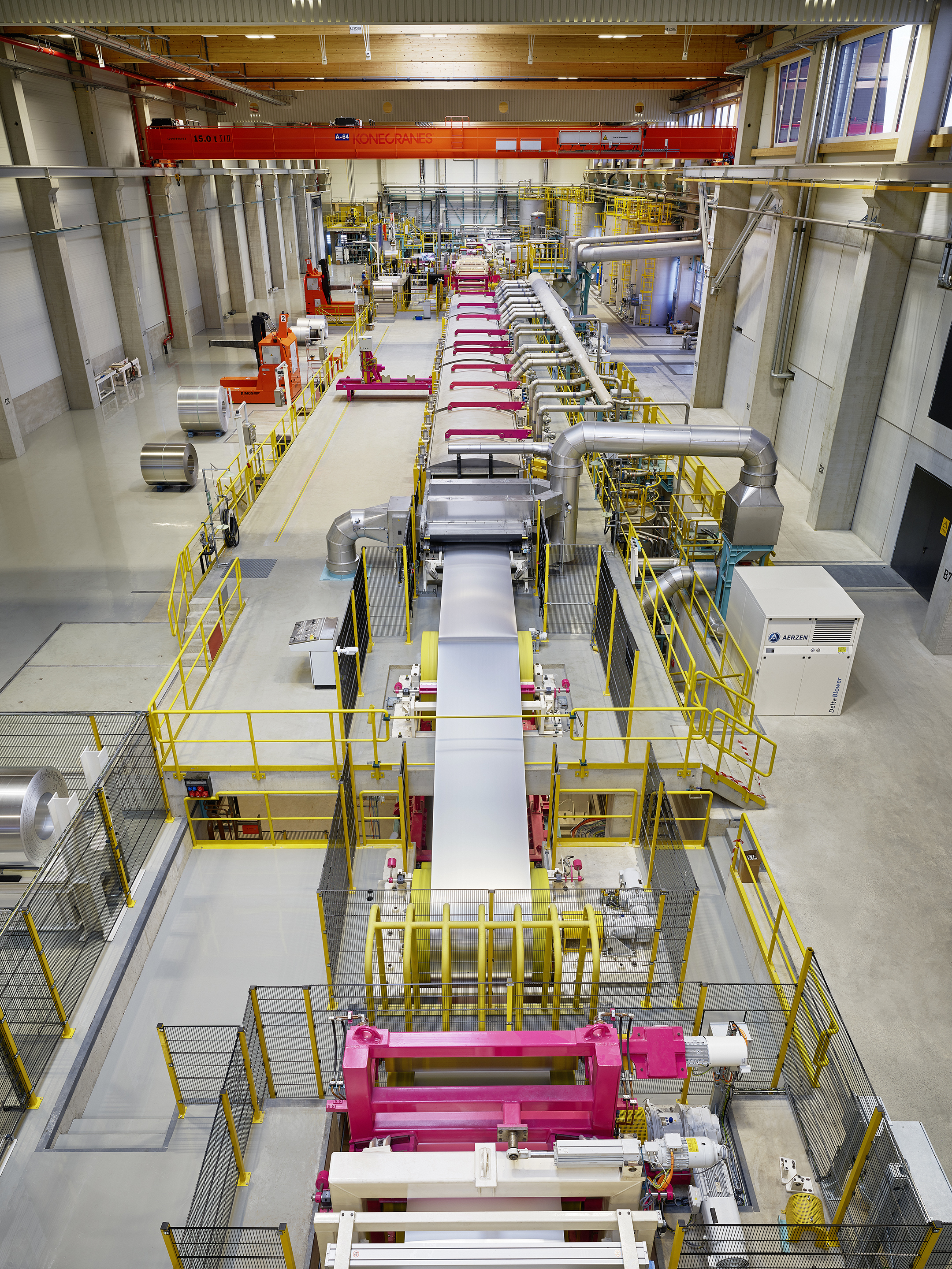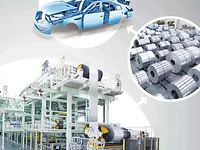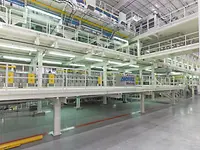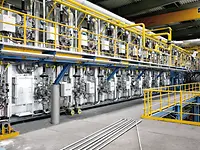ANDRITZ Metals successfully completed the contract for the new surface treatment line with the signing of the Final Acceptance Certificate on August 27, 2024. The continuous aluminum strip processing line produces up to 30,000 tons per year using a highly efficient spray pickling process. It can treat various alloys, both cold-rolled and hot-rolled, up to 5 mm in strip thickness. The line uses exclusively electrical heating powered by green energy, and the integrated wastewater treatment results in environmentally friendly production. This significantly reduces the CO2 footprint and helps AMAG achieve its sustainability goals. Advanced digital solutions and modern data analysis methods are used to increase the quality and productivity of the surface treatment line.
ANDRITZ designed, delivered, and installed the complete line, including engineering services, installation, commissioning, and production optimization of the following core equipment:
- Terminal and strip transport equipment
- Stitcher and taping machine to cover the stitch
- Surface treatment section with highly efficient spray pickling system
- Quality and surface inspection
- Oiler with spray system
- Foil applicator machine
- Autonomous coil transport system
- Waste-water treatment plant, including:
- Neutralization process
- Evaporator for waste pickling
- Filter press
- Unloading and storage area for chemicals used in the process
The surface treatment line is connected by the autonomous coil transport system to the customer’s highrack coil warehouse in the adjacent building.
INNOVATIVE CONCEPTS AND DETAILED PLANNING WERE DECISIVE TO WIN THE CONTRACT
During the planning stage of this project, ANDRITZ presented innovative concepts focusing on the highquality surface needed for bright products and efficient wastewater treatment and recycling within the new production building. These key features were decisive for AMAG to award the contract to ANDRITZ in September 2021.
ANDRITZ SOLUTIONS TO REACH AMAG SUSTAINABILITY AND PERFORMANCE GOALS
The new 115-meter long plant is built on a greenfield site next to the existing production area. Several innovative and sustainable solutions have been implemented to enhance both environmental performance and production efficiency:
- Decarbonization through an electrically heated process: The entire processing line is powered by green energy, using only electrical heaters and no fossil fuels. This shift to renewable energy significantly reduces carbon emissions, making the facility more sustainable and aligning with global decarbonization goals.
- Flexible production planning: By reducing the aluminum content in the pickling solution, the process can adapt very flexibly to varying production demands. Additionally, the reduced consumption of chemicals results in lower direct production costs and minimizes waste, contributing to more sustainable production practices.
- Recycling of wastewater streams: The plant incorporates advanced wastewater management and partially recycles rinse and wastewater streams. This approach reduces overall water consumption and decreases the environmental impact of wastewater discharge, making the processing line more ecofriendly.
- Re-use of Sodium Aluminate: The used pickling solution is treated and improved within the facility. The resulting sodium aluminate solution is handed over to an external partner, who uses this by-product to produce flocculation aids and other communal wastewater purification agents.
- Intelligent coil system: The METRIS intelligent coil system allows for coil-specific evaluation of all relevant data, including quality metrics, energy usage, and media consumption. This data-driven approach optimizes resource allocation, enhances quality control, and improves overall efficiency.
- Autonomous coil transport system: To streamline operations, the facility employs an autonomous coil transport system that efficiently handles coils within the new hall and the adjacent building. This automation reduces manual handling, increases safety, and enhances production flow.
- Optimized plant layout for bright strip products: The plant layout has been meticulously designed to optimize the production of bright strip products by minimizing the number of rolls in contact with the strip surface.
Together, these sustainable solutions not only improve the environmental footprint of the new surface treatment line but also ensure greater operational flexibility, resource efficiency, and product quality.








